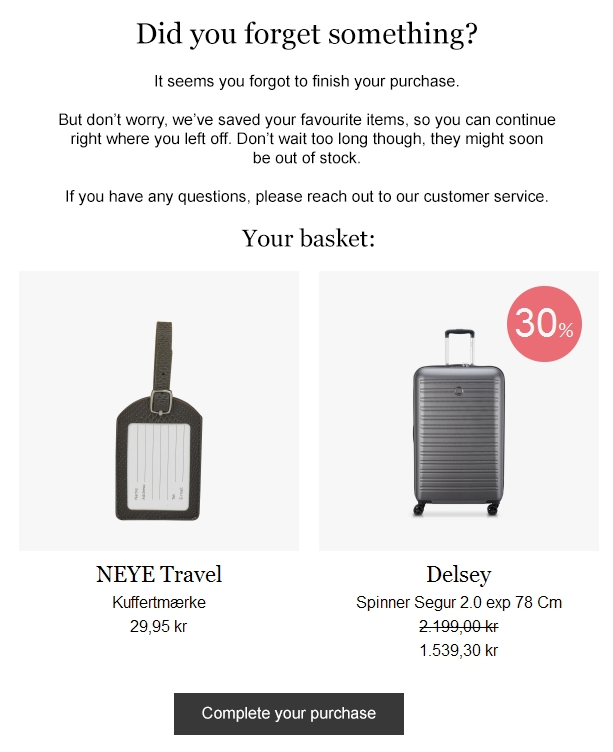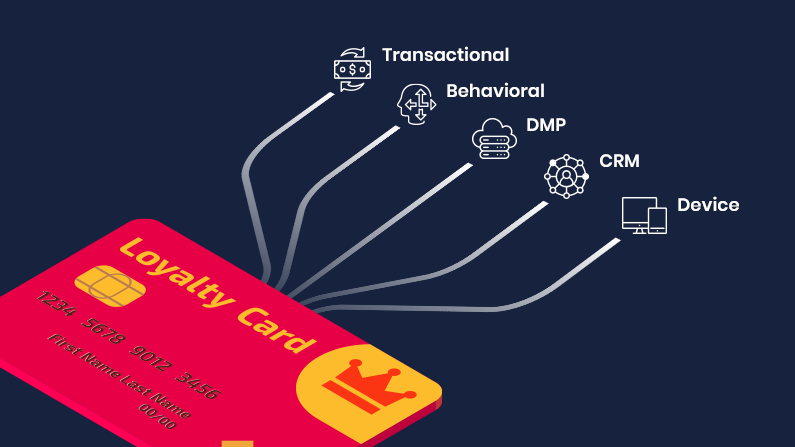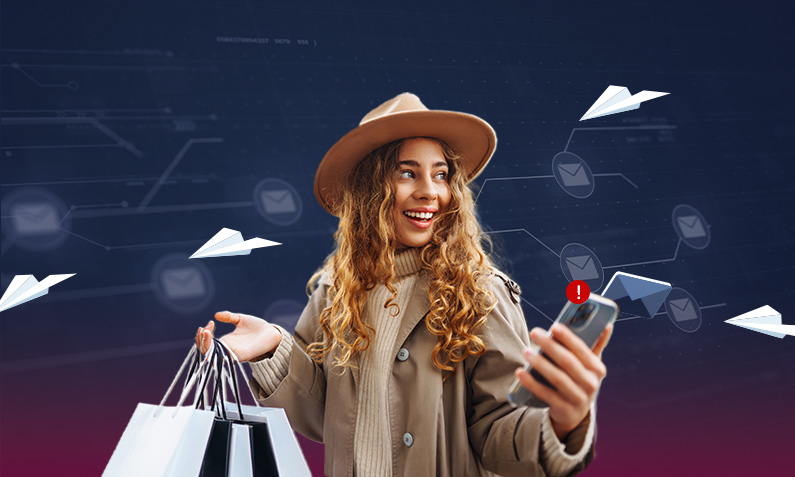How to boost sales with personalization in your fashion ecommerce
Feb 22, 2022 | E-mail Triggers, Fashion, Website Recommendations, Site Search

I hate to break it to you.
The level of personalization you experience when you visit a normal store is significantly lower than what you get online. If the e-commerce has done their homework, that is.
Why, you ask? For starters, no one in the brick-and-motor shop rolls out a clothing table filled with shirts and dresses in only your size and style. And few will assist you through every nook and cranny of the store to provide you with alternative styles based on previous purchases or related interests.
At least not at a level you would feel comfortable with. That level of personalization is unobtainable. Anywhere but online.
Within the next five years, the online fashion industry is expected to grow from $759,5 billion to $1 trillion dollars. One of the cornerstones to this growth is the ability to make every customer experience unique.
In this blog post, you will learn exactly how this is mastered and how a personalized approach to online shopping will boost your sales.
Personalization in e–commerce is purely hygienic
It’s not exactly groundbreaking that personalization is a differentiating factor when the customer decides where to put her hard-earned money. It’s has become a “license to play”, and without it, you are lost by today’s e-commerce standards.
According to research by Epsilon and GBH, 80% of shoppers are more likely to make a purchase if the retailer offers personalization. It’s the new normal.

“It’s crucial that we don’t communicate in the same way as we’ve done in the last 130 years. We wanted to move away from mass communication and personalize every experience and increase the relevance to each individual customer.”
Jacob Breinholst
Chief Digital Officer, NEYE
Personalization helps customers navigate
However, few online webshops are in the direr need of personalization than the vast world of fashion, apparel, bags, and accessories industry.
All the sizes, colors, shapes, collections, styles, and combinations can confuse even the most hard-boiled fashionista. It’s a jungle, and much more complicated than most other retail categories.
“Analysis paralysis” is a phenomenon where too many choices make the shopper unable to decide. According to research by Accenture, more than 40% have left a website due to feeling swamped with choices.
Personalization solves that muddy business by placing the products you are most likely to find interesting right under your nose. E-commerce fashion, compared to other retail categories, needs to “ease the path” for shoppers when the choice-architecture is so complex.
So, here are the top personalization modules for your webshop and e-mail marketing campaign.
1. Hand-picked just for you

Who doesn’t love personal style options? With recommended products, you catch the visitor’s attention by presenting them with choices that match any previous search results and/or purchases. It’s an ideal scroll-stopper which immediately forms recognition, as the visitor is drawn towards items that look like previous purchases or are in the same category.
This might seem kind of basic, but it’s an effective way to catch customers’ attention by subtly telling them: “I know what you want and here it is”.
If you don’t have any data on the visitor yet, you can always place the most popular products in this module.
Read how Shoe-d-vision generates 13% of their online revenue directly from personalization
2. “I want what she’s got”

Example source: NEYE
Another very popular module to include in any fashion retailer is the “others also bought”, also known as the stamp of social proof.
As you might know, people are inclined to perceive others’ activities as of high value and will likely be inspired by their choices. On your website, a module with other visitors’ choices is extremely useful, especially when the customers enter for the first time and need a place to navigate towards.
Going for what the group has chosen has great attraction, especially in the fashion segment, where people – despite their desire to stand out– will seek approval in their style choice.
3. Pick up where you left off
Create a positive experience by removing barriers that stand in the customer’s way. Not everyone who enters your online doors can remember what caught their eye the last time. They might not even be in a “peckish purchase mood”, but you can still draw their attention to their last behavior either on web or by sending them an automated e-mail.
Reminding customers about their former behavior is extremely powerful as it relies on the so called Zeigarnik effect – our compulsion to complete activities we have already started.
Want to learn how psychological triggers can nudge and convert leads?
It also involves the Sunk Cost fallacy where customers are more prone to keep shopping if they have already invested time and money in a project (such as adding items to your basket).
When you nudge customers with products they have shown interest in, you attract attention to their “unfinished business”, Maybe you hit a homerun and they head straight to check-out, or maybe you simply stay top of mind. Either way, a “recently viewed” section is a powerful tool.
Read how Bon’A Parte, a Raptor Customer, converted as high as 30% with reminders in visitors’ e-mail about their abandoned basket.
4. Something you found intere… SALE!!

Giving your customers a heads-up when one of their favorite items goes on sale is such a helpful move. Tell me, who wouldn’t want that intel?
With a personalization trigger you track users who have shown an interest in a product and lets them know when the price drops.
The anchoring effect is an extremely popular trigger in price psychology. Potential customers establish a price point (or anchor point) from the first price you introduce to them. When you send an e-mail alerting them on to a reduction on that price, you create a sense of both urgency and thrill at the prospect of saving some money.
Want to learn the art of nudging in fashion?
Personalization is the simplest way to make customers come back.
Get the guide here →What’s next?
These are just a selection of the possibilities you have within personalization. There’s no doubt that, as the technology develops, it will continue to play a big role in fashion e-commerce – an industry that by its nature is utterly complex.
We know that people don’t just buy fashion because they need new clothes (sometimes we really don’t!), but to achieve a certain sensation, to feel and look our best.
The mechanisms and variables behind these purchases are much more psychological, which your website and e-mail campaigns should attempt to reflect.
And let’s be frank, who wouldn’t prefer immediately finding what they are searching for instead of spending hours browsing and doing comparisons and research? And who wouldn’t like the convenience of matching products together, so you get the sole that matches the sneakers.
Personalization gives your customers that extended help. And your customers will reward you in return.
Crush Customer Loyalty in fashion
Personalization is the simplest way to make customers come back.
LEARN HOW →Related Content
You might also like
Do you transform your Black Friday encounters into lasting relationships? Or do you let this annual...
Learn More
Sustainability and e-commerce. To many, they’re considered close to mutually exclusive. But they...
Learn More
If you're familiar with price drop triggers, you already know how effective they are at converting...
Learn More
It’s a common myth that B2B Salesdon’treally need a proper digital setup. After all, “people buy...
Learn More
If you’re a seasoned e-mail marketer, you might think you know everything you need to know about...
Learn More
Is this how you create newsletters too? If you work in e-commerce, you might recognize this routine:
Learn More
No reason to sugarcoat it. E-commerce is facing a lot of challenges right now. Chinese giants like...
Learn More
It’s a name that’s impossible to ignore. No matter how hard you try. TEMU. The Chinese giant has...
Learn More
Stakes are incredibly high in fashion. With a global market value of predicted to reach 1.2...
Learn More
E-mail marketing is an important way to stay in touch with your customers. But it can also be a...
Learn More
Let us show you what you can achieve with premium personalization


A Raptor expert can share more about the product and answer any questions you have.












